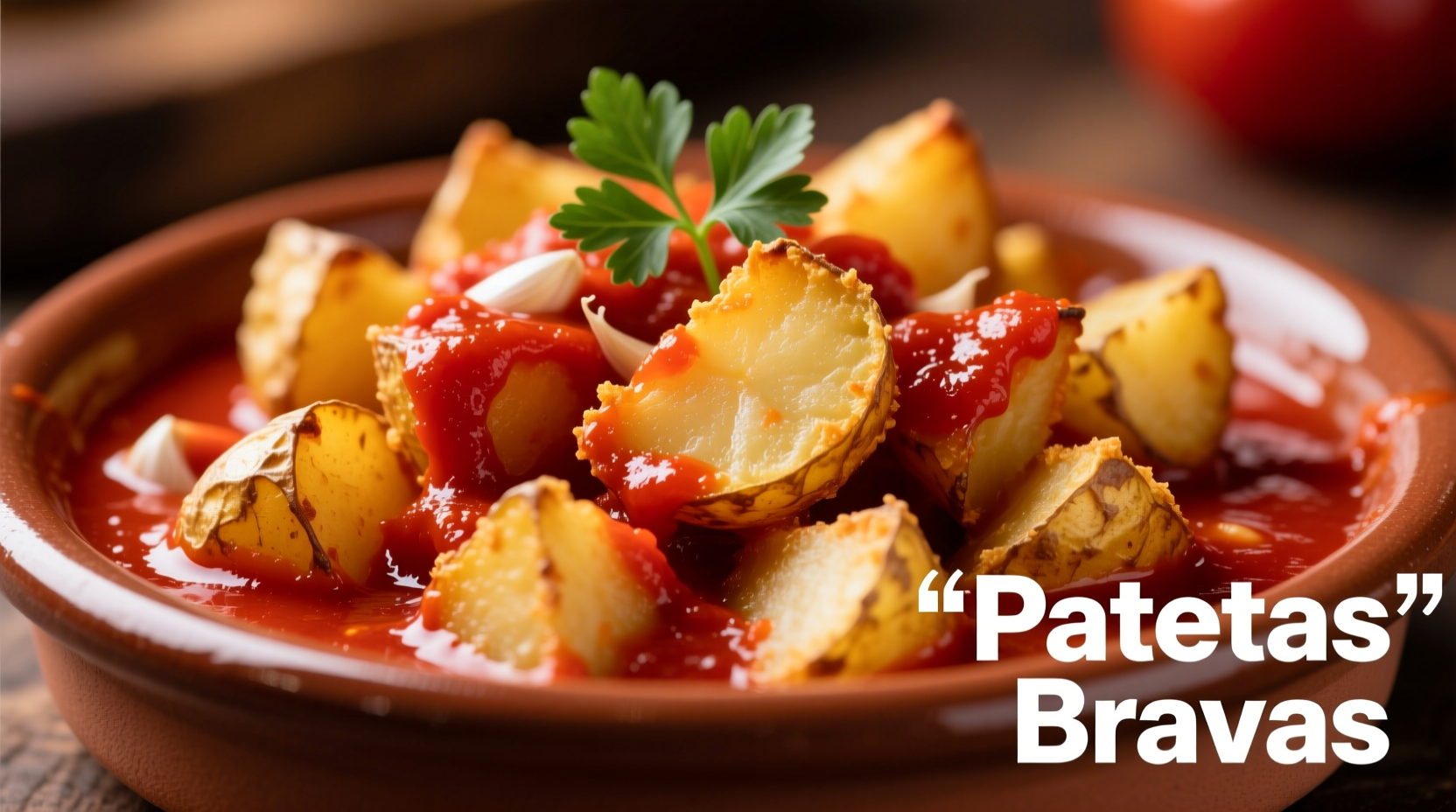Craving authentic Spanish tapas but unsure how to recreate that perfect balance of crispy potatoes and flavorful sauce at home? You're not alone. Millions search for how to make genuine patatas bravas outside Spain each year, often frustrated by soggy potatoes or bland sauces that miss the mark. This guide reveals the culinary secrets behind Spain's most ordered tapas dish, combining historical context with actionable techniques that transform your kitchen into a Madrid tapas bar.
The Evolution of Spain's Signature Tapas: A Culinary Timeline
Understanding patatas bravas requires appreciating its journey from humble bar snack to national icon. Unlike many traditional dishes with centuries of history, patatas bravas emerged relatively recently but has become deeply embedded in Spanish food culture.
First documented appearances in Madrid working-class bars as a simple, affordable snack for laborers
Spread across Spain during post-war economic recovery, becoming a standard tapas offering
Formal recognition in Spanish culinary literature; regional variations begin to emerge
Global popularity surge; featured on menus worldwide while maintaining authentic Spanish preparation methods
Why Your Patatas Bravas Never Taste Authentic (And How to Fix It)
Most home cooks make critical errors that prevent authentic flavor development. The traditional Madrid-style patatas bravas preparation method requires understanding three non-negotiable elements that separate authentic versions from imitations.
Potato Selection: The Foundation of Perfect Bravas
Not all potatoes work equally well for patatas bravas. The ideal variety balances starch content for crispiness with structural integrity to maintain shape during double-frying. Here's how common varieties compare:
| Potato Variety | Starch Content | Crispiness Potential | Best For Bravas? |
|---|---|---|---|
| Russet | High | ★★★★☆ | Only for first fry |
| Yukon Gold | Medium | ★★★☆☆ | Ideal balance |
| Red Bliss | Low | ★★☆☆☆ | Poor choice |
| Agata (Spanish) | Medium-High | ★★★★★ | Most authentic |
For authentic Spanish patatas bravas texture, Yukon Gold offers the best compromise for availability and performance outside Spain. Professional tapas bars in Madrid typically use Agata potatoes, but Yukon Gold's similar starch structure makes it the superior substitute.
The Double-Fry Technique: Crispiness Science Explained

Achieving that signature crispy exterior with fluffy interior requires precise temperature control. The professional patatas bravas frying method follows these exact parameters:
- First fry: 300°F (150°C) for 5-6 minutes to cook potatoes through without browning
- Cooling period: 10 minutes at room temperature to allow starch retrogradation
- Second fry: 375°F (190°C) for 2-3 minutes for maximum crispiness
This two-stage process creates a moisture barrier during the first fry, preventing oil absorption during the second fry. Skipping the cooling period results in oil-logged potatoes regardless of temperature.
Mastering the Bravas Sauce: Beyond Basic Tomato
The "brava" in patatas bravas refers to the sauce's "wild" or "angry" flavor profile. Authentic traditional patatas bravas sauce ingredients vary by region but share core components that create its distinctive kick.
Madrid vs. Barcelona Sauce Traditions
Understanding regional patatas bravas sauce differences is crucial for authenticity. While both versions use tomato base, their preparation and additional ingredients diverge significantly:
- Madrid style: Smoked paprika-forward with cayenne heat, minimal garlic, thick consistency
- Barcelona style: Aioli-based with tomato swirl, garlic prominent, thinner application
For the most authentic Madrid-style bravas sauce recipe, combine:
- 200g strained tomatoes (not sauce)
- 15g smoked paprika (Pimentón de La Vera)
- 2g cayenne pepper
- 5g garlic paste
- 3g cornstarch (for proper thickness)
- Simmered for exactly 12 minutes
Avoiding Common Patatas Bravas Mistakes
Even experienced cooks make these critical errors when attempting how to make crispy patatas bravas at home. Recognizing these pitfalls ensures authentic results:
The Salt Timing Trap
Salt application timing dramatically affects texture. Adding salt before the second fry creates steam pockets that prevent crispiness. The professional patatas bravas salt technique requires seasoning immediately after the second fry while potatoes are still hot.
Sauce Application Error
Authentic tapas bars never drown potatoes in sauce. The correct patatas bravas sauce ratio is 1:4 (sauce to potatoes) - just enough to coat the crispy exterior without softening it. Serve extra sauce on the side for dipping.
Temperature Mismanagement
Patatas bravas must be served immediately after frying. Waiting more than 3 minutes significantly reduces crispiness as moisture migrates from the interior. For best results, fry potatoes in small batches just before serving.
Serving Like a Spanish Tapas Bar
Authentic traditional Spanish patatas bravas presentation follows specific conventions that enhance the experience:
- Serve in small ceramic dishes (never on plates)
- Portion size: 150-200g per serving
- Accompanied by small wooden picks for sharing
- Always paired with a chilled Spanish beer or vermouth
In Madrid tapas bars, patatas bravas typically appear as the second course after simpler tapas like olives or anchovies. This progression allows flavors to build gradually throughout the meal.
Perfecting Your Home Tapas Experience
Recreating the authentic patatas bravas restaurant experience at home requires attention to detail beyond just the recipe. Consider these finishing touches:
- Use a cast iron skillet for more consistent frying temperatures
- Finish with a sprinkle of fresh parsley (never cilantro)
- Serve on warmed dishes to maintain temperature
- Offer both Madrid and Barcelona style sauces for comparison
Remember that authentic patatas bravas should feature potatoes that audibly crunch when bitten, with sauce providing heat that builds gradually rather than immediately overwhelming. The ideal traditional patatas bravas texture balance creates contrasting sensations in every bite.











 浙公网安备
33010002000092号
浙公网安备
33010002000092号 浙B2-20120091-4
浙B2-20120091-4